#root system
Text
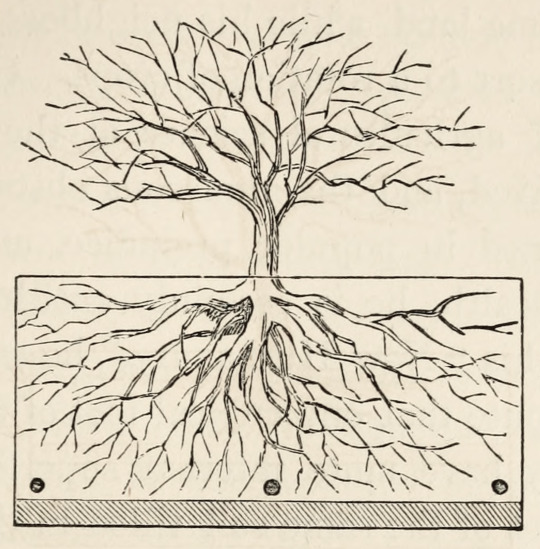
The root system of a fruit tree. Practical and scientific fruit culture. 1866.
Internet Archive
1K notes
·
View notes
Text

Hanging on
hicks.07
2K notes
·
View notes
Text


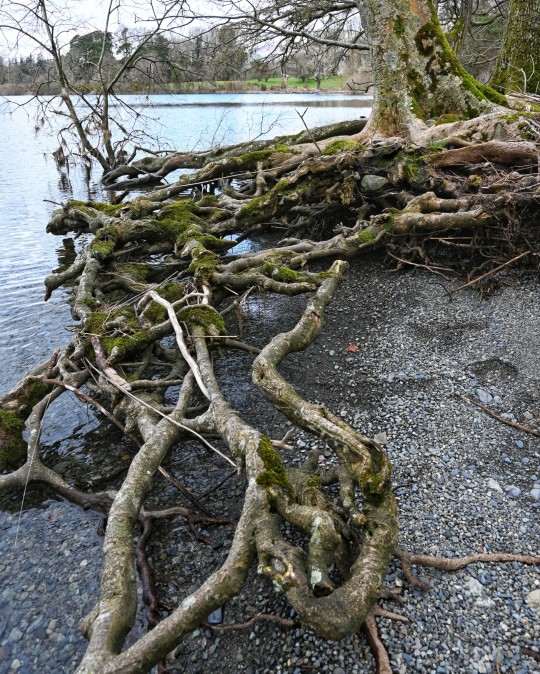

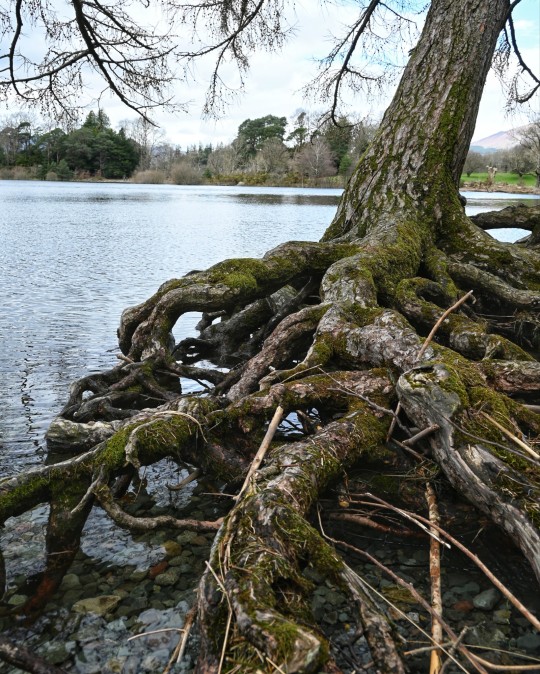



Calfclose Bay, Derwentwater, Lake District
#landscape#trees and forests#tree trunk#tree roots#trees#outdoors#wild places#natural features#wild living#ancient culture#ancient living#walking#natural beauty#lake district#lake#root system
88 notes
·
View notes
Text
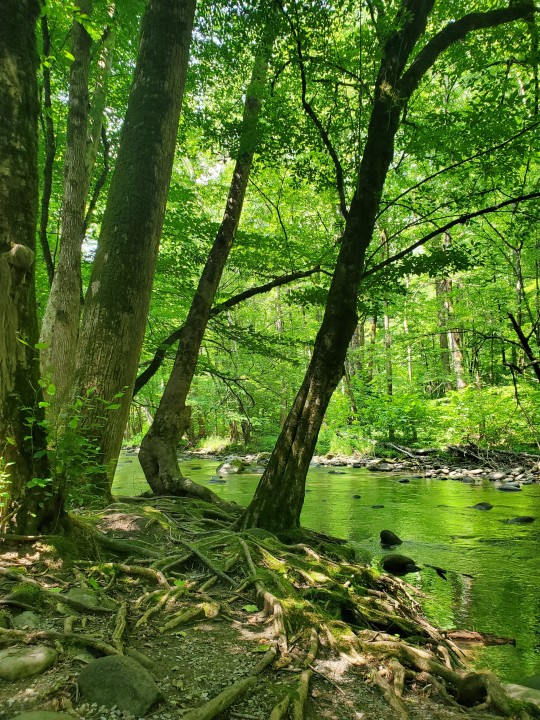
@faythgoddess
8 notes
·
View notes
Text

Sunday, 2023/06/18, by Jacob Hubertus.
#diary#visual diary#dark art#dark aesthetic#gothic#forest#black and white#monochrome#kinda depressing#depressing shit#trees#art diary#original photographers#original photography on tumblr#original content#artists on tumblr#art#artoftheday#original art#root system
5 notes
·
View notes
Text

It's amazing how complex these systems are, yet we've never been able to see it.
#skeleton#plastic skeleton#halloween#halloween decorations#spring#storm#wind#wind storm#towering spruce#fallen#fallen tree#roots#root system#complex#amazing#unseen#honor#you will be missed
3 notes
·
View notes
Text
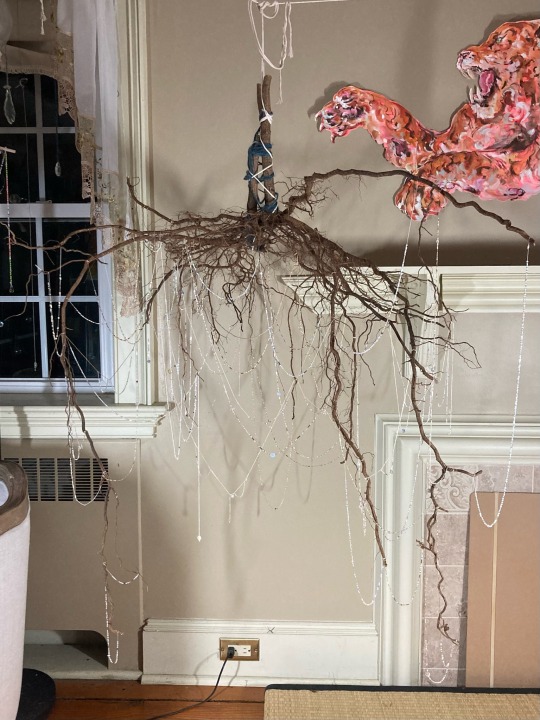
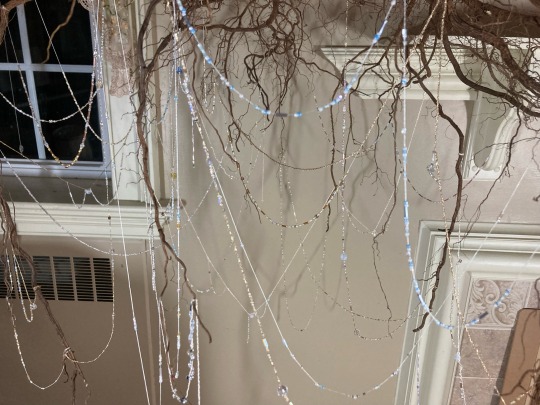
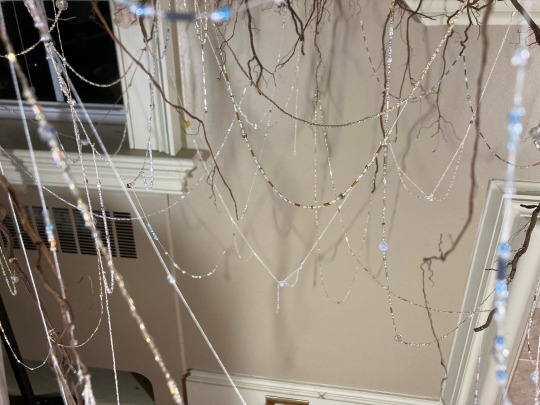
“Mycorrhiza”
I dunno what Kind of mycorrhiza this would really count as? Should we consider it an extomycorrhiza with extraradical mycelial cords? Hmmmm well it glitters! and has a very confused infomercial on mycorrhiza too! Which is my warning that obviously I’m not an expert this is just info I collect for Fun and could’ve misread stuff yanno
Mycorrhiza - the symbiote relationship of a fungus and a plant (slime molds you affectionately) - of the funguses role in the plants rhizosphere (the layer of soil influenced by the waste products of roots and where the most soil associated microorganisms live - the root microbiome)
The bacteria and other microorganisms feed by grazing on the rhizodeposition - the casting off of old plant cells, adds carbon to the soil - and the secretion of proteins and sugars (called root exudates - a mucilaginous secretion of plant specific polysaccharides/long sugar chains, that stick to the tips of roots) While the roots provide the food the soil microorganisms and bacteria perform nutrient cycling (breakdown or reuse/reforming of organic or inorganic matter cyclically so that it can be used again for the production/creation of new biomass in the ecosystem? Water Cycle for example, lake water evaporates, condenses in the atmosphere, and then eventually precipitates back down into the environment again) and produce antibiotics needed by plants - right near their roots, since the soil microorganisms feed on the root exudates and then their own metabolic waste products are cycling or producing something of use to the plant in turn.
Hm hmm anyways Mycorhizza! Mycorhizza! Mycorhizzal Layerrre! So for mycorhizzal association symbiosis or mutualism or sometimes even fun and funky parasitism, the mycorrhiza fungus grows on the host plants roots tissues in either of two ways - intracellularly (taking place/involving the inside of a cell) or extracellularly (taking place/involving the space outside of the cells plasma membrane)
Arbuscular mycorrhiza (AM) fungus (AMF) is an intracellular version which involves the symbiont fungus getting into the cortical cells (of the cortex - an outer layer of a stem or root in a plant below the epidermis but beyond the vascular water veins) of the roots or vascular plants (so sorry mosses maybe next time bryophytes) to form arbuscules (sites of nutrient exchange in the mycorrhiza relationship) AMF are good at absorbing phosphorus, sulfur, nitrogen, and other stuff from the soil, so good in fact that it’s suspected that AMF eating up said elements and passing it on through the arbuscules to vascular plants is part of how vascular plants became widespread and prevalent enough to colonize most of the earth - the AMF mycorrhiza is the most common type of plant symbiosis out there, present in up to 80% of plants (Wao much fungus amongus plants and fungus are mutual(istic)s, besties even!)
Wikipedia: hyphal growth
Me: HYPHAE!!!! WE LOVE HYPHAE!!!
Let’s talk more about ✨Arbascular mycorrhizal fungus✨since it seems Fun ::3
So AMF comes to be in a nice three step recipe or spore germination (not dependent on host plants presence but can happen at an increased rate in the presence of root exudates - the polysaccharide or long sugars or proteins etc), hyphal growth (which is controlled - gasp! nooo fungus free thyself and spread hyphae everywhere! - by root exudates called strigolactones (chemical compound group created by roots, considered plant hormones - they promote mycorrhiza germination, get the host plant recognized As the host plant by the fungi parasites, and keep plant roots from budding too much into an energy deficient monster of a root system - Wao) and the soil-phosphorus concentration - lower concentration means more hyphal growth plus plant releases hyphal growth encouraging juice) and appressorium formation (appressorium is a special type of cell that is used for infecting host plants…. So this is the bit that worms it’s way into the cortical cells? Neat excuse me this shit can get through Mylar wtf fungus What Violence What Rage tis beautiful)
*points at chemotaxis* they’re in love your honor! (Platonically) - so remember how we said chemical signaling attracts the hyphae to gather to the host (also notably when host puts out come hither for symbiote purposes signals the hyphae grow in denser clusters around the host and when there’s Not they branch more) Anyways chemotaxis is movement of organism in response to chemical stimulus but it’s speculated the AMF fungus may experience host-specific chemotaxis (fig trees fig wasps fig trees fig wasps oh to evolve into codependency - is not my dream but live yours little arbuscular mycorrhizal fungi!)
Appressorium (burrows into your house and home) or infection structures (oh that’s such a Badass term) grows first on the epidermis of the roots (outside skin!!!!) then from there it punctures into the Parenchyma cortex (parenchyma in plants is the softer cell areas, so inside roots tough outside - it’s the nice chewy bits not the outside of the ginger you scrape off with a spoon yah Dig?) Once our Totally Not Invasive haha what’re you talking about it has benefits for the plants Shush Appressorium has gotten into the parenchyma the fungus super branches to form the arbuscule sites of nutrient exchange (the straw may be one hole - wasn’t that the mathematical answer? But it is bidirectional) arbuscule growth can be Paris type (coily! Going through cells to each new one) or Arum type (branched,in the spaces between cells) - which type depends on the host generally… since the host has a degree of control over the hyphal branching and arbuscule formation (the host says you may have Three sites of nutrient exchange and No More!!! Can’t disobey hospitality rules, that doesn’t abide by fae law after all oh dear does that mean mushroom are fae better go teach them how to Trick the host into breaking hospitality rules though that might be a bad idea as well)
OH THEYRE OBLIGATE SYMBIOTES? Nice hey wait that means they’re not super good at Saprotrophic nutrition?? But that’s onna the best sorts of extracellular digestion (phagocytosis is still winning because I’m fond of it) but!!! *oozes and digests decaying and rooting organisms* is such a close contender!!!! Oh well this burrowing stuff is neat too Dependent On Plant For Carbon Nutrition and all
Anyways! Let’s move onto ectomycorrhizal fungus!!! *singing* extracellular symbiote tiiiiime
Ectomycorrhizal (I have to sound that out in my head everytime I type it) fungus or EcM (eckem! May I have your attention) deal with around 10% of plant families (oh woah so AMF are tots winning huh) particularly Woody Plants! Like birches dipterocarps (who? Oh!!!!!!! Rainforest trees that’s ideal I love dipterocarps your branching system is very cool even if the competition is Tight), eucalyptus, oak, pine, rose families (rosaceae?), orchids (did you know some (is it most? All? Gastrodia?) orchids go through a stage of life where essentially their only source of nutrition is from their symbiote fungus? They can’t photosynthesize during this time so it’s the EcM feeding them OwO cool intersectionalism) and… other fungi from Basidiomycota (major subcategory or fungus, uhhh mostly Above ground when mature funguses it seems? Mushrooms, puffballs, stinkhorns, then a lot of living-on-plants fellows liek rusts (on leaves) and smuts (in the cereals) and more - filamentous fungi made up of hyphae with basidia cells (spore sites!) that gen produce four meiospores (haploid spores, meiosisized to quarter genetic information kinda? For remix purposes?)), Ascomycota (the Other big fungi phylum, in Dikarya (fungi subkingdom) sac fungi! Cause of the sac where they form ascospores which can move around on their own! Need for pollinators morels and baking yeast are sac fungi! Fun), and Zygomycota (an ex-phylum that became the phyla Mucuromycota (mostly mycorrhizal fungi and plant decomposers) and Zoopagomycota (often obligate parasites of other zygomycete fungi or animals, like nematodes NOOOO THE WORMS))
Some trees will have up to fifteen species of EcM in a symbiote with them (ahhhh????) also fun the EcM isn’t losing either cause while AMF have 80% of plant life there are only around 240 species but the EcM have approx 7750 species known but its suspected the numbers are closer to 20-25k (Wao!!!!)
Ectomycorrhiza grow in a hyphal sheath or a mantle around the end of the hosts roots and form a Hartig Net (net of inward growing hyphae that grow in between the epidermis and the cortex of the host, the space that acts as the site of nutrient exchange) sometimes despite being extracellular the EcM hyphae will penetrate the hosts cells, in which case it’s an ectendomycorrhiza mycorrhiza…. Outside of the mantle and root the EcM forms ectomycorrhizal extramatrical mycelium (or extraradical mycelium) which are filamentous hyphae that grow outwards into the soil with the ectomycorrhiza as the center point - the filamentous hyphae may be fine and hydrophilic (attracted to water) constantly branching in the soil to search for nutrients, or they may gather into rhizomorphs (or mycelial cords - parallel orientated hyphae, which are hydrophobic and strong for the purpose of transporting nutrients)
#sculpture#beading#mycorrhizal fungi#mycorrhiza#root system#magpie instincts made me do it#sparkly chandelier sculptures everywhere
14 notes
·
View notes
Text
From this main root axis, lateral roots develop to form an extensively branched root system (Figure 5.8).

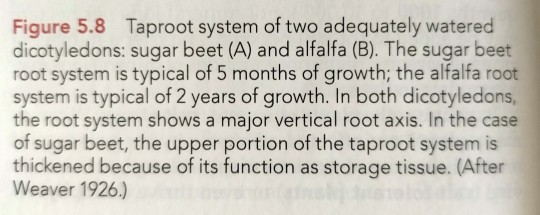
"Plant Physiology and Development" int'l 6e - Taiz, L., Zeiger, E., Møller, I.M., Murphy, A.
#book quotes#plant physiology and development#nonfiction#textbook#root system#dicot#dicotyledon#eudicots#sugar beet#alfalfa#taproot#plant growth#soil water#groundwater
3 notes
·
View notes
Text
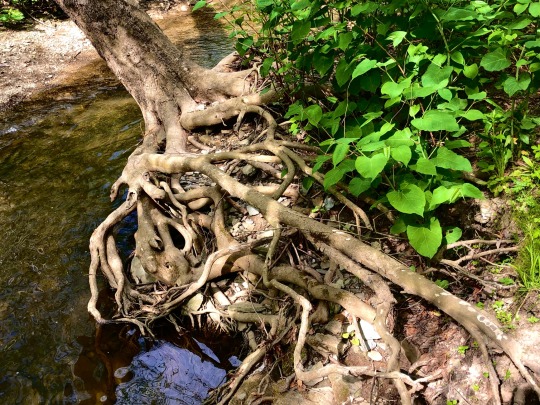
#trees#tree roots#roots#root system#forest#forestcore#nature#naturecore#woods#woodland#photography#nature photography#photographers on tumblr
9 notes
·
View notes
Text
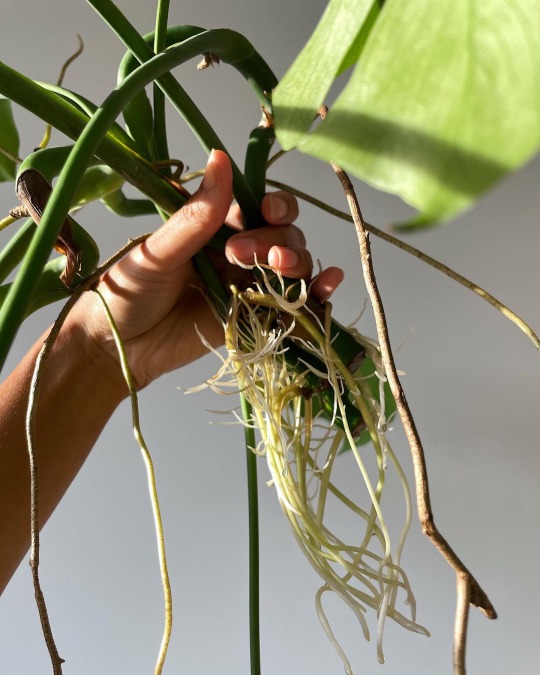

The roots of my monstera deliciosa cuttings are healthy. They’ve been growing in water for a little over a month.
3 notes
·
View notes
Text

#cannabis#420#weed#cannabiscommunity#cannabisculture#weedsociety#weed cultivation#cultivate#indoor garden#indoorgrow#growyourown#root system#plantlife#plants
3 notes
·
View notes
Text

"Rooted plant from tip of stem." The small fruit culturist. 1881.
Internet Archive
191 notes
·
View notes
Text

root value? #root #value #nature #instagood #tree #money
0 notes
Text
The root system of a young eudicot consists of the primary (or tap) root and its branch roots.
"Plant Physiology and Development" int'l 6e - Taiz, L., Zeiger, E., Møller, I.M., Murphy, A.
#book quote#plant physiology and development#nonfiction#textbook#root system#eudicot#plant roots#primary root#taproot#branch roots
0 notes
Text

Mushrooms
0 notes
Text
I feel like both internet liberals and leftists have a tendency to reverse-Great Man Theory Ronald Reagan at the expense of any insight into the history of his policies or the conservative movement that led up to him.
#YOU CAN’T JUST BLAME EVERYTHING ON HIM WITHOUT TACITLY ABSOLVING COUNTLESS OTHER MONSTERS AND THE WHOLE FUCKING SYSTEM OF ITS GUILT.#IT’S DEEPLY INDIVIDUALISTIC AND ARGUABLY ANTIHISTORICAL.#Anyway this is because I saw a post that blamed him for the US backing brutal regimes in the global south under the guise of anticommunism.#When that famously started back in the post-WWII era and has its roots in Monroe Doctrine ideology.#FYI I fucking hate him but he’s a part of a larger picture.#(Anyway I study American politics during the Cold War with a focus on the rise of the far right.)#original content#100#500#1k
1K notes
·
View notes